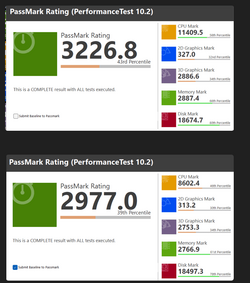- Local time
- 4:37 AM
- Posts
- 5,149
- Location
- Hafnarfjörður IS
- OS
- Windows XP,10,11 Linux (Fedora 42&43 pre-release,Arch Linux)
Hi folks
I'm trying to find some sort of passable stats on the performance issues of running W11 from bootable physical vhdx file(s) - note physical vhdx files not in a VM or hosted on Hyper-V as "Raw drives" compared with the more usual classic way windows is installed from an iso, update or whatever. The Internal physical disk is an SSD (or an M2 type of thing) so quite fast.
Is there any significant difference in performance -- assume identical apps and hardware on both types of installs.
Cheers
jimbo
I'm trying to find some sort of passable stats on the performance issues of running W11 from bootable physical vhdx file(s) - note physical vhdx files not in a VM or hosted on Hyper-V as "Raw drives" compared with the more usual classic way windows is installed from an iso, update or whatever. The Internal physical disk is an SSD (or an M2 type of thing) so quite fast.
Is there any significant difference in performance -- assume identical apps and hardware on both types of installs.
Cheers
jimbo
My Computer
System One
-
- OS
- Windows XP,10,11 Linux (Fedora 42&43 pre-release,Arch Linux)
- Computer type
- PC/Desktop
- CPU
- 2 X Intel i7
- Screen Resolution
- 4KUHD X 2







